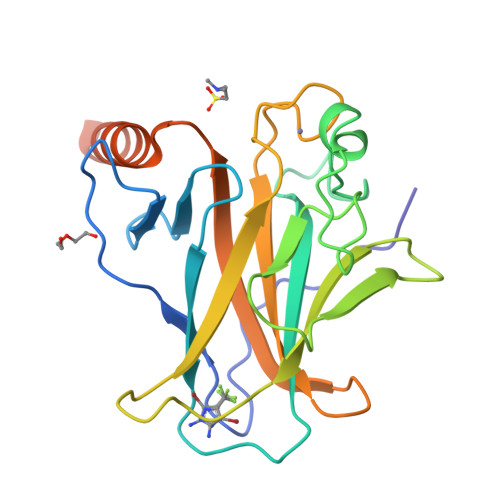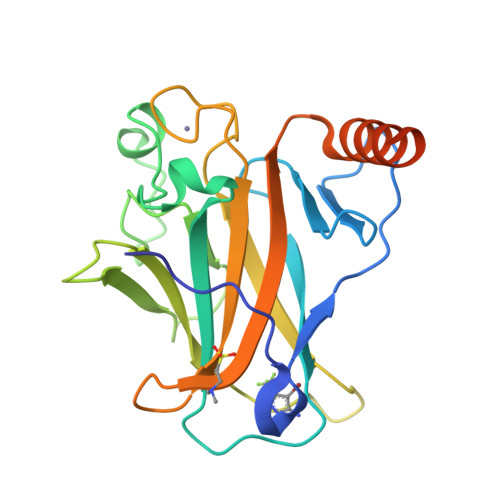Revisiting a challenging p53 binding site: a diversity-optimized HEFLib reveals diverse binding modes in T-p53C-Y220C.
Stahlecker, J., Klett, T., Schwer, M., Jaag, S., Dammann, M., Ernst, L.N., Braun, M.B., Zimmermann, M.O., Kramer, M., Lammerhofer, M., Stehle, T., Coles, M., Boeckler, F.M.(2022) RSC Med Chem 13: 1575-1586
- PubMed: 36561072
- DOI: https://doi.org/10.1039/d2md00246a
- Primary Citation of Related Structures:
8A92 - PubMed Abstract:
The cellular tumor antigen p53 is a key component in cell cycle control. The mutation Y220C heavily destabilizes the protein thermally but yields a druggable crevice. We have screened the diversity-optimized halogen-enriched fragment library against T-p53C-Y220C with STD-NMR and DSF to identify hits, which we validated by 1 H, 15 N-HSQC NMR. We could identify four hits binding in the Y220C cleft, one hit binding covalently and four hits binding to an uncharacterized binding site. Compound 1151 could be crystallized showing a flip of C220 and thus opening subsite 3. Additionally, 4482 was identified to alkylate cysteines. Data shows that the diversity-optimized HEFLib leads to multiple diverse hits. The identified scaffolds can be used to further optimize interactions with T-p53C-Y220C and increase thermal stability.
Organizational Affiliation:
Lab for Molecular Design & Pharm. Biophysics, Institute of Pharmaceutical Sciences, Department of Pharmacy and Biochemistry, Eberhard Karls Universität Tübingen Auf der Morgenstelle 8 72076 Tübingen Germany frank.boeckler@uni-tuebingen.de.























